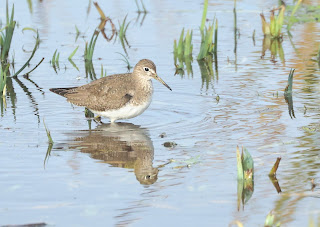Solitary Sandpiper: This small inconspicuous wader should be halfway on its annual migration between Canada and Central America.
Instated its annual migration has been disrupted by strong westerly winds and storms which has brought it all the way to Kent.
The bird has remained pretty settled and has been here for over a week now, but with work commitments and the baby not being too well with a virus I have been unable to go down until this weekend.
Stodmarsh National Nature Reserve (NNR), is located just outside Canterbury between Stodmarsh Village and Grove Ferry Picnic Site and is one of the largest seedbed habitats in the South East. The reserve consists of reedbed, open water, and grazing marsh with some wet woodland.
Upon my arrival I headed over to the Reedbed Hide and parked myself on the standard hard wooden benches that you find in bird hides, you know the ones that soon turn into a medieval torture device after a few hours of sitting on!
Eventually a small sandpiper comes flying in low over the hide landing on the area of cut reed in front of the hide. To everyones disappointment this turned out to be a green sand. But with a bit of paitcence and a numb back site the solitary dipped in and started to feed on this cut reed infant of the hide.
It was good to compare both the green and solitary sand side by side in the same area. The solitary was smaller, greyer then the green sandpiper which has a distinct contacts been the upper and lower parts.
the solidarity sands legs are typical a dull olive but this bird had almost yellowish legs with spotted striped upper parts of its tail.
I was blown away by how well this bird was showing for us, all the other previous sightings had been mixed with dissent views.
After seeing this bird I will be double checking any green sands I stumbled across out in the field, you never know.
















